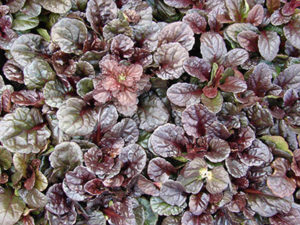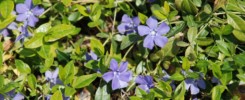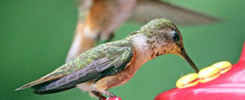The traditional turf lawn has been a mainstay of landscaping for many years. But lawn alternatives are catching on; for their ease of maintenance, low water requirements, and pest resistance.
Popularity of Lawn Alternatives Keeps Growing
A well-manicured, traditional turf lawn is a wonderful thing to behold. But that beauty comes at a cost. Plenty of water, time, and expense are needed to attain the coveted billiard green uniformity. Egan Davis, Principal Instructor of the Horticulture Training Program at the UBC Botanical Gardens says the trend toward garden spaces and lawn alternatives is an eco-friendly choice.
I like the trend of moving away from grass and toward varied plantings. I think having success with a garden also means fostering biodiversity, and things like food for pollinators. There’s a limit to what turf can provide, but a garden has layers of ecological benefits.
Another reason for the increasing popularity of lawn alternatives is the reality that despite the big commitment of resources needed for great turf, a plague of bugs like the chafer beetle could still leave your green space looking like a moonscape. Karin England knows. She’s a professional landscape architect and Park Planner for Metro Vancouver, but even her expertise was no match for this ravenous insect.
Pest Resistant and Low Maintenance

Karin decided on thyme as an alternative. Thyme lawns are not attractive to chafer beetles and other pests, require a fraction of the water of grass, and require almost no maintenance.
Stay On The Grass
There’s no need to tear up all your turf however. A judicious approach to the lawn can deliver the comforts of a grassy space without as big an impact on the environment or your time. Davis sees lawn space as a hard-wearing staple of a well-planned space.
The big thing turf does is traffic tolerance and resilience. There are all kinds of natural ground covers, but when it comes to foot traffic tolerance there is no plant that is quite as resilient and no really good alternatives for that function.

Attribution: © Forest and Kim Starr / flickr / (CC BY 2.0)
Davis points to high traffic and kids’ play areas as natural spots for grass. He also thinks new combination seeds such as those incorporating micro-clover and tall fescue are a great solution, especially considering their higher resistance to chafer beetles. Some other alternatives to consider are Blue Star Creeper and Ajuga or ‘bugleweed’ where a low growing mat of flowers creates an attractive ground cover.
Both Davis and England like the Grow Green Guide for the direction it can offer gardeners wanting a healthy garden attuned to local conditions and contributing to biodiversity in our region.
“The Grow Green resources are great for coming up with ideas for plantings,” says Davis. “If you don’t have experience, consider hiring a landscape professional to help you with the decisions and the layout.”
Take a look at our ‘Lush Lawns‘ section for more information and to find lawn plans suited to your space.



